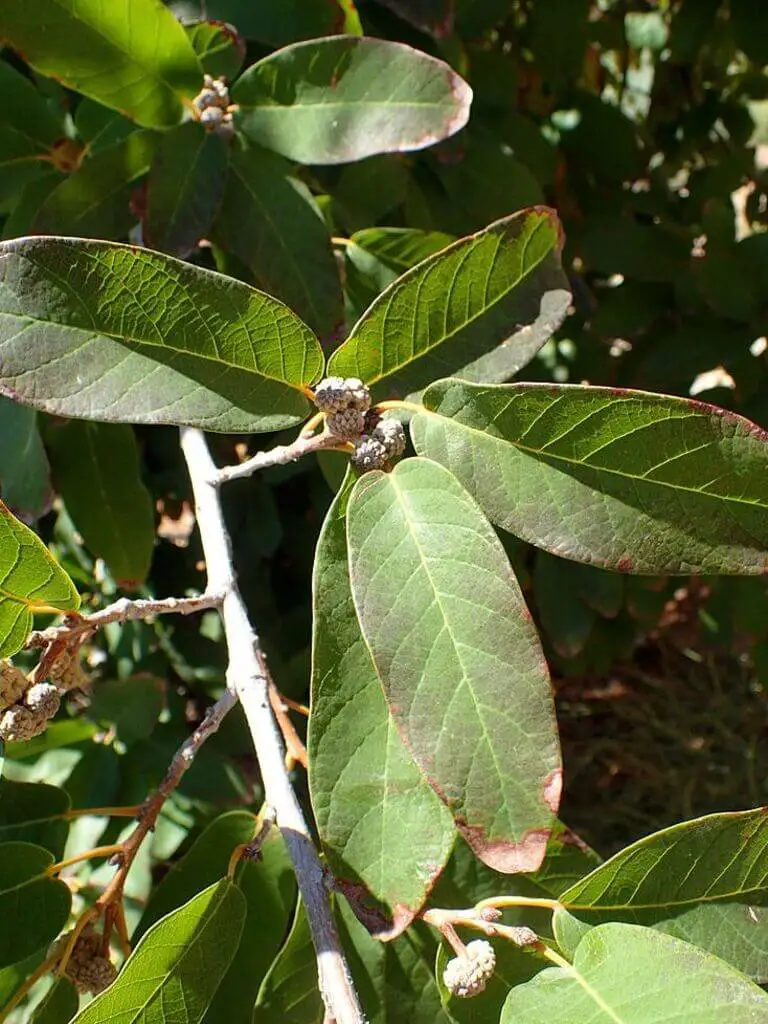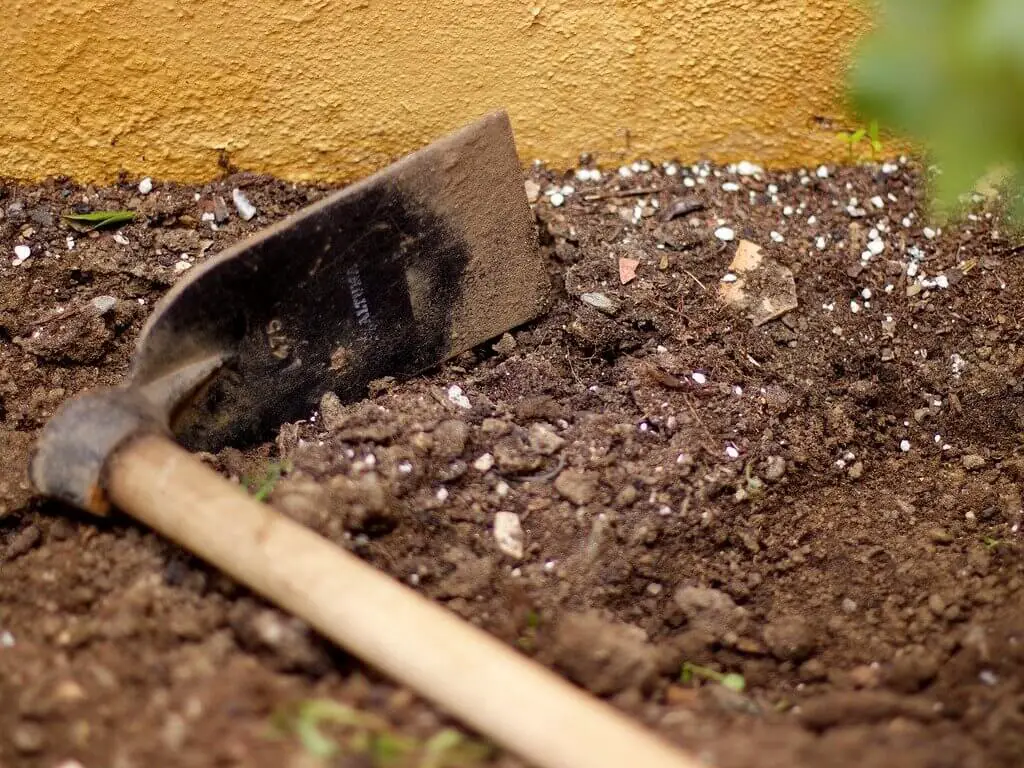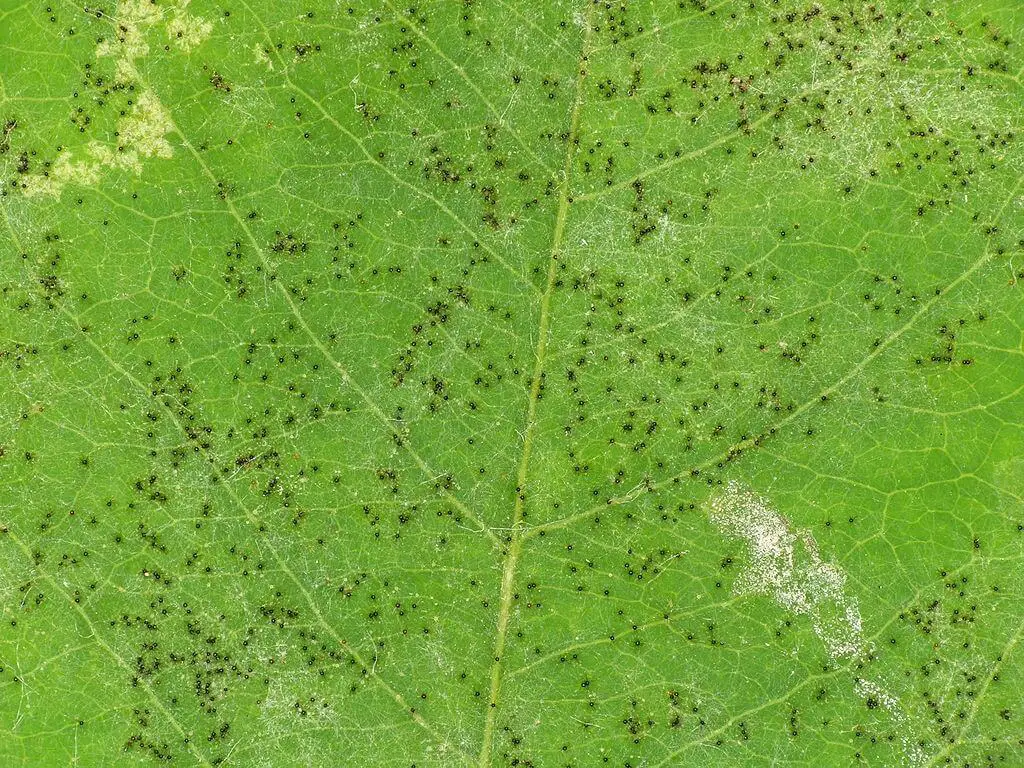Growing Mexican White Oak (Monterrey Oak) Trees
Mexican white oak (Quercus polymorpha) also has other names such as Monterrey oak and net leaf white oak. This is one of the North American native oak species. These trees are spread across Mexico, Honduras, and Guatemala. In the US, this tree is grown for ornamental purposes also.
In fact, there are more than 600 classified oak species found in the Northern hemisphere regions. Among them, the most common ones grow in North America, Europe, and Japan.
This article focuses on Mexican white oak (Monterrey oak), Habitats, Description, Characteristics, Propagation, and some uses.
It is technically classified as a semi-evergreen tree. So, it can be a deciduous tree or can keep its leaves throughout the year, depending on the environment. This tree also has fire-resistant characteristics.
Table of Contents
History and Habitat

Photo by Clinton & Charles Robertson (Wikimedia Commons) (CC BY-SA 2.0)
According to Jill Nokes, Texas Nature Conservancy discovered Mexican white oak (Monterrey oak), during their surveys at Val Verde County in the early 1990s. This simply means the experts discovered this variety of trees only a few decades ago.
Generally, the Mexican white oak is known in the united states by a single population. The exact spot is located near Dolan Falls, to the North of the Río Grande (about 30 Km) in the popular Val Verde County, Texas state.
In fact, these trees are slowly gaining popularity in the southern US market. Some southern US gardeners already started to plant them in their gardens.
According to Howard Garrett, San Antonio-based Lone Star Growers supposedly trademarked the name “Monterrey oak”. However, most nurseries sell these species under the same name. Some sell them under different names including Mexican white oak and net leaf white oak
Description of Mexican White Oak (Monterrey Oak)

Photo by Krzysztof Ziarnek, Kenraiz (Wikimedia Commons) (CC BY-SA 4.0)
Generally, the trash trees grow quickly. Having weak woods and low resilient characteristics, common diseases and pests often infest them.
Although the Mexican white oak (Monterrey oak) grows fast, it is not a trash tree. It has strong woods and some resilient characteristics. Hence, the gardeners prefer these trees over most other counterparts.
The average growth rate of this tree is about 4 feet every year. Typically, this tree can grow up to 67 feet (20 meters) in height. The barks are brown or grey in color. With age, they develop flaky plates (with shallow fissures) and scales.
The fruits of these trees are called oak nuts or acorns. Typically, they mature in about a year. Each fruit has one seed. Naturally, a tough, leathery shell covers the seed and a cupule engulfs one-half portion of the fruit. Acorns measure about 1 – 6 cm long and 0.8 – 4 cm wide.

Photo by Krzysztof Ziarnek, Kenraiz ( Wikimedia Commons) (CC BY-SA 4.0)
The egg-shaped or elliptical leaves grow almost 15 cm long. Mostly they have smooth edges. Sometimes they may have uneven serrated edges also. The blooming season is usually summer (March-May)
In fact, different specimens of these trees have different shapes of leaves. The scientific name “polymorpha” confirms these characteristics.
In most cases, the young seedlings develop more intense serrated leaves. These leaves smooth out as the trees mature.
Usually, these trees shed their leaves during late winter or sometimes in the early spring. Then, the leaves regrow abruptly in 2-8 weeks depending on the environment.
While regrowing, young leaves have beautiful red-peach shade. At this stage, their beautiful looks can be compared to ornamental flowers. As they grow, they become leathery and turn bright green in color.
Lifespan of Mexican White Oak (Monterrey Oak)
These trees have an average lifespan of 100 years. With age, they develop a broad rounded crown, that provides exceptional cooling shade. Hence, the houses within the vicinity of the shade tend to be cooler compared to the others.
In drought-hot areas and thin soils, most trees including the Monterrey oak grow weaker and thinner. Contrastingly, under favorable conditions, these trees grow fresher and healthier. Hence, environmental conditions play a great role in the growth and life span of any tree.
These plants thrive well in USDA zones 7-10. They usually prefer to grow in hilly regions rather than flat lands.
Generally, you can find these trees growing in varying environments like riverbanks, dry forests, desert-like areas Etc., The hardy characteristics of these trees enable them to thrive in these environments.
Propagation
Purchase
In the US, Mexican white oak (Monterrey oak) is highly popular in few southern states like Texas. However, the adoption rate is much lower in other areas. This is expected to increase in near future. This is the case with fairly new species all over the world and it is completely normal!
Nowadays, the demand for these trees is increasing every day. Hence, in some areas, these trees are not frequently available. Commercial growers are trying hard to meet the demands.
It is easy to purchase seeds in some southern states like Texas or from online sites like Amazon. You can also try your luck in seed swapping-trading sites.
Planting

Mexican white oak can adopt various soil types including clay and sandy loams. However, these trees prefer to grow in mild alkaline, well-draining soils. Occasional fertilizing rejuvenates them.
Select a location that receives full sunlight or partial shades. Plant the seeds at least 1 /2 inches deep and water thoroughly. Then, water regularly at the initial stages of growth. As the tree matures, occasional water is enough to suffice its healthy growth.
Typically, these trees are sensitive to wetness. Hence, avoid overwatering as it can be an invitation to common pests and diseases.
Generally, these trees grow quickly. To raise a healthy canopy, you may have to occasionally prune the lower limbs. However, you may not need to spend several hours shaping these trees like other oak species. This factor also attributes to the low maintenance characteristics of these trees.
Pests and Diseases

Photo by Norbert Nagel, Mörfelden-Walldorf, Germany ( Wikimedia Commons) (CC BY-SA 3.0)
Oak wilt is a common contagious fungal disease among the oak varieties. This disease spreads faster among the oaks. Especially Erythrobalanus variety of oaks is found to be most vulnerable to this disease.
According to Dr. David Appel, (Texas A&M professor) this disease has infested a few Mexican white oak trees. However, based on his biological expertise, he argues, these trees have higher capabilities to fight back the disease compared to other varieties.
In spite of a few positive experiences, the resistance ratio of Monterrey oak trees against the oak wilt disease is yet to be confirmed scientifically.
The powdery mildew commonly affects most trees including the Monterrey oak trees. In most cases, these trees recover on their own with seldom human intervention.
In Texas, some gardeners have reported the spring oak worms infections on the foliage. As expected, the damage was minimal and trees recovered on their own.
If the spring oak worm infection persists for long durations, sprinkle diatomaceous earth on the infested portions. This kills the worms quickly and trees regain their normal texture. In fact, you can use this powerful chemical to kill almost any type of worms.
Uses of Mexican White Oak (Monterrey Oak)

All oak species including the Mexican white oak are heavy, hard, strong, and dense (close grain). Due to the high tannin content, they are resilient to common pests and diseases.
Due to the above factors, these woods play a vital role in the furniture industry. Most widely, they are used in cabinets, floors, furniture, barrels, joinery, decking, paneling, fence posts, veneers Etc.,
These woods cater as fuels also in many applications like stoves, house heating furnace, coal production units Etc.,
In the US, these species are slowly gaining popularity. Most gardeners grow them in their lawns and gardens. But they are reliable as landscape trees and street trees also. Beautifying the space, they can provide excellent cooling with their large canopies.
Typically, these hardy trees can grow in a wide range of environments. Being resilient, these trees are well suited for both rural and urban landscapes.
The best example for utilizing the potential of these trees can be seen in the University of Texas, Austin. For decorating the 434-acre campus, the landscape designers planted Mexican white oak trees strategically. They also grow these trees in all the prime locations.
Learn more about Mexican White Oak
Similar plants
Growing Gopher Plants
All about Forsythia Hedge

